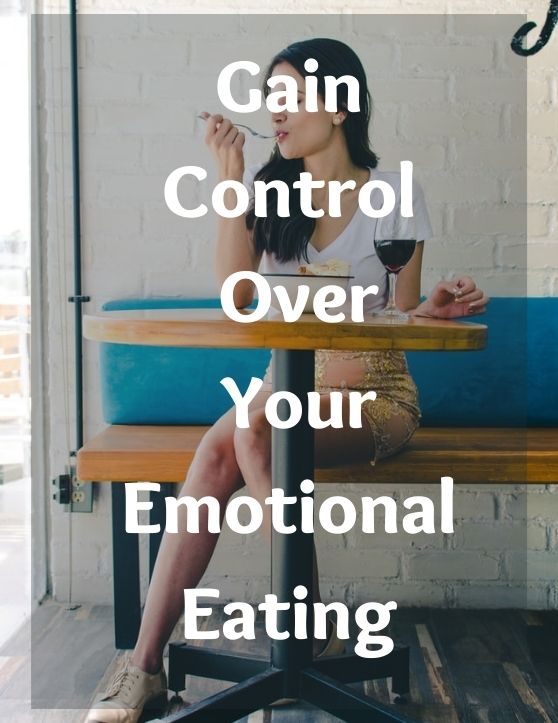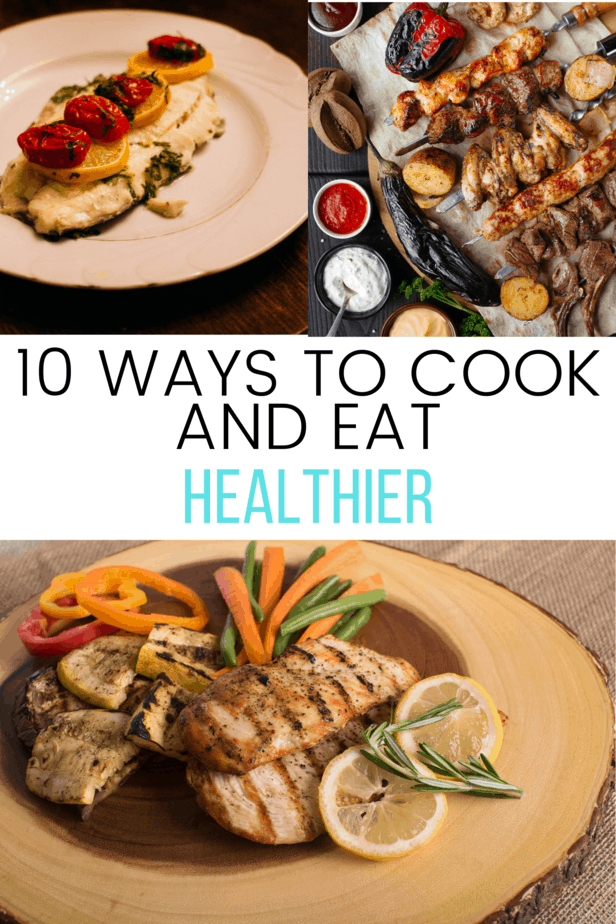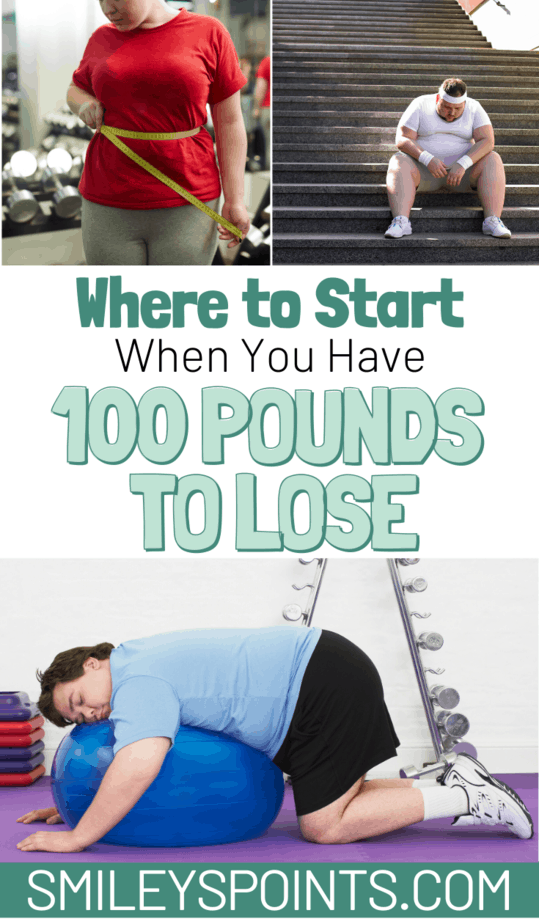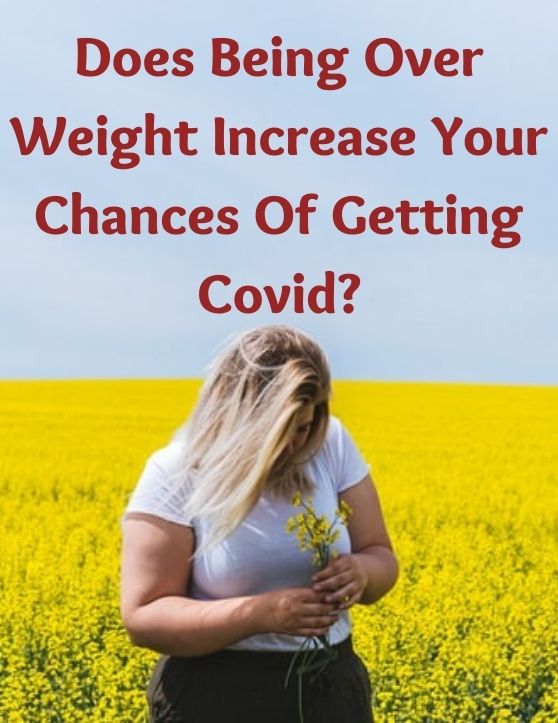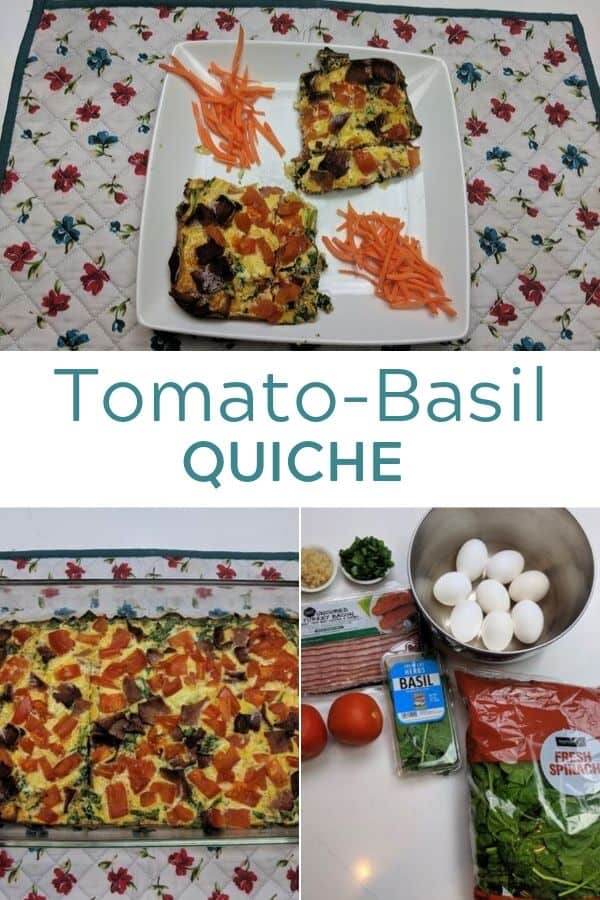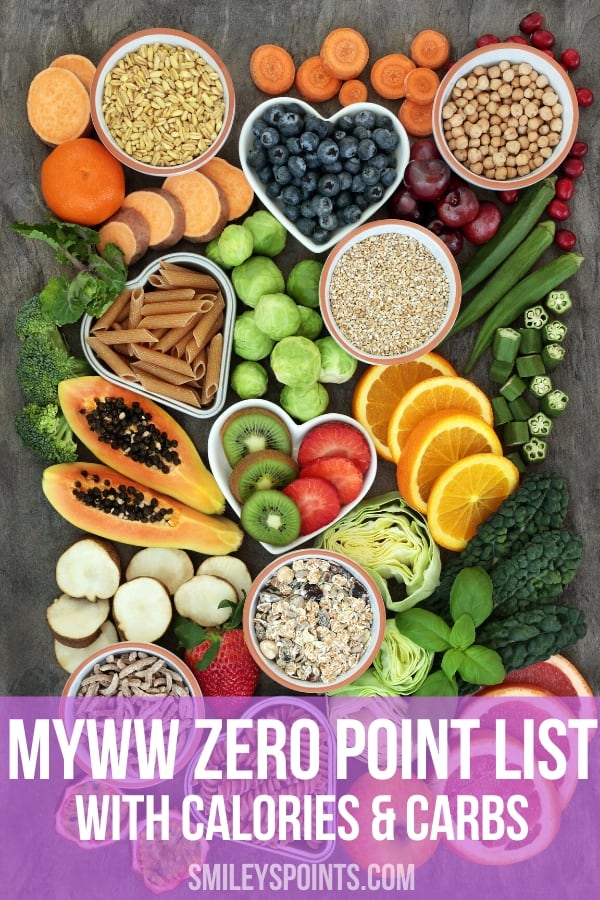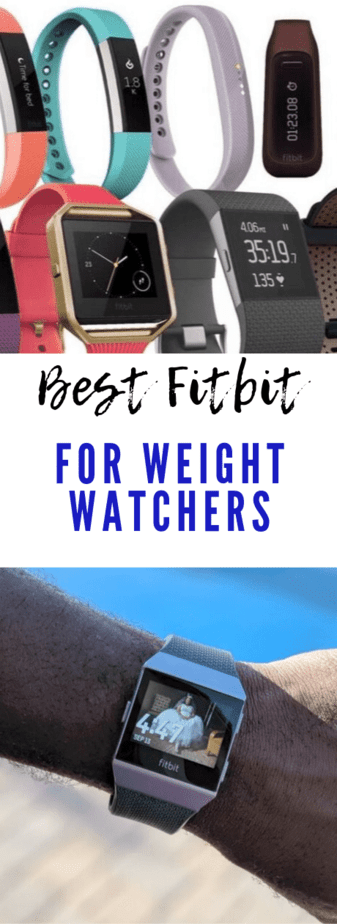Emotional Eating: Learn How I Took Back Control
At some point in our lives, we all find ourselves using food as a source of temporary comfort. We may not realize it at the time, but eating mindlessly in the hope of feeling better leaves us with unhealthy habits and, in most cases, health issues. I found myself in the same dilemma a few months back. I ate food for comfort, to feel good, but instead, this careless eating manifested itself in the form of extra weight and lethargy. This is my story of how I defeated my pattern of emotional eating and took back control of my eating habits.
“Healthi formerly iTrackbites is an alternative to Weight Watchers. “
What is emotional eating?

Emotional eating is medically defined as consuming large quantities of food, usually junk foods, in response to feelings instead of hunger. Experts estimate that emotions cause 75% of overeating. In layman's terms, emotional eating means eating for reasons other than hunger. It is often triggered by negative emotions like sadness, depression, loneliness, or stress due to its soothing distraction from these negative emotions. In this case, food works as essentially a reward. But it is not always prompted by negative feelings. Emotional eating can be linked to positive feelings, too, celebrating a holiday feast.
An emotional eater tends to not listen to their body's natural hunger and fullness signals. They eat way more than they need or want.
Emotional eating interferes with making healthy food choices. This deteriorates one's health leading to various diseases such as obesity, diabetes, and other related illnesses.
Here are a few signs of emotional eating to keep an eye on:
1. You eat as a response to your emotions: You eat as a reaction to your feelings, not hunger. If you find yourself reaching out for a snack whenever you feel anxious/ sad/ bored/ tired, or stressed, it is a sign that you are giving in to the habit of emotional eating.
2. Food provides you solace: Having your “comfort food” once in a while is one thing, and burying yourself into it every time you feel low is another. Comfort food is mostly a high caloric, low nutritional junk food which offers no real benefit or ‘comfort'. The perceived comfort is always psychological. Turning to this low nutritious food to feel better is another significant sign of emotional eating.
3. Your eating habits are creating a hindrance in your weight loss goals: You've been trying to lose weight for a long time, but your habit of eating even when you are not hungry and not stopping even when you are full is coming in the way of your weight loss goals. If you notice your unhealthy eating habits going out of your control, no matter how much you try to stop, you still end up eating junk just because you had a craving for it; it is time to take back control of your eating habits.
4. You eat to feel better: You find yourself being emotionally dependent on food. You start relying on it for happiness. Eating is no longer a bodily activity for you; it is a major source of pleasure in your life. If you turn to food to fight negative feelings, specifically to derive a sense of happiness, you might want to sit back and introspect yourself for emotional eating.
5. You feel insatiable and you eat even when you are full: You imagine eating your favorite dish even on a full stomach or reach out to grab a packet of chips right after you've had your meal. You may feel full after the meal but never feel satisfied. The momentary satisfaction you feel is during the meal, and therefore, you return to eating after a while to feel that satiation again.
If you exhibit these behaviors as well, it is a sign that you are turning into an emotional eater.
Physical Hunger vs Emotional hunger

To some extent, we all are emotional eaters. But when emotional eating starts causing sudden weight gain or cycles of binge eating, it can turn into a serious problem.
Emotional eating works in a vicious cycle of pleasure and problems. The person eats to get distracted from the issues they are facing, food provides them momentary pleasure, as soon as they stop eating they are faced with their original problems and to feel better they again start eating. As eating doesn't solve the real problem, this cycle keeps on going until it is manifested in the form of a severe illness.
There are a few fundamental differences between physical hunger and emotional hunger.
Physical hunger:
- develops gradually and can be delayed
- can be satisfied with a variety of foods
- you're likely to stop eating when the sensation of fullness kicks in
- doesn't cause feelings of guilt and shame
Emotional hunger:
- feels sudden and abrupt
- causes cravings for specific foods
- you tend to binge on food and still don't feel full
- you feel guilt or shame afterward
Next time you find yourself reaching for a snack, take a pause and think which type of hunger is driving it.
Why do people turn to food for comfort?

People often turn to food for comfort when faced with life hassles or obstacles like financial worries or relationship problems. Negative emotions are known to lead to a feeling of emptiness, also known as an emotional void. Food has proven to be a way to fill that void and create a false sense of “fullness” or temporary wholeness.
They usually choose energy-dense, high-fat, and sweet food, such as chocolate, ice cream, and French fries.
Here are common reasons that drive comfort eating or emotional eating in people;
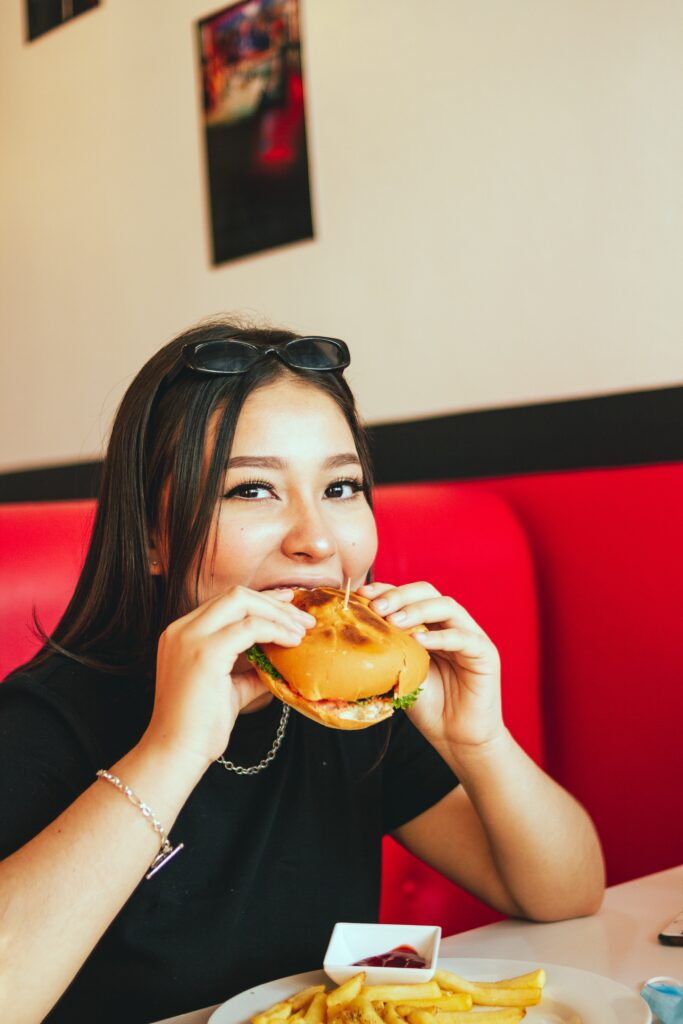
1. Feelings of pseudo happiness: Eating high-fat, energy-dense, sugary or salty food activates the brain's reward system. These foods activate the corresponding brain regions of reward and pleasure that are triggered when one does drugs. Studies of obese individuals show that brain areas associated with drug reward are activated by anticipating and receiving highly palatable foods. That's why chocolate generally increases pleasant feelings and reduces tension.
This feeling of happiness or fullness is “pseudo” or false, as it wears away in no time, leaving the person to want to eat more of this junk. This cycle is the main reason behind obesity or other health problems in the victims of emotional eating.
2. Coping mechanism: Filling up on sugary and fatty food is often distracting from common life hassles. This is the reason why people turn to junk when stressed out about something. There is a consistent connection between negative emotions and the consumption of unhealthy foods. It has been reported that people are drawn to unhealthy food as a coping mechanism in a bad mood. At the same time, people in a good mood choose healthy food.
The studies, however, showed that while people find high-dense food comforting in stressful situations, so does the healthy food and consuming no food at all. In fact, eating junk during negative situations only worsens one's state of mind. People tend to feel guilt or shame upon the consumption of high fatty food, which only adds to the negative emotions they were facing earlier.
3. Filling up the void: Humans have a tendency to associate certain foods with our friends or family members, mainly because food is an integral part of family gatherings and festivities. Whenever we feel lonely, we look towards these food items to provide us comfort and warmth. The soothing and calming effects of comfort food lie in the memories of secure attachment it calls to the mind.
Studies suggest that people who have positive family relations are more likely to turn to food for comfort.
4. Nostalgia: Scientific principle dictates that there is a strong link between scents and memories. The aroma of food elicits detailed emotional memories of the past. A special flavor of ice cream, for example, may remind one of their childhood summer breaks. Because these aroma-elicited recollections tend to be positive, it improves mood and produces positive feelings.
5. Physiology: Numerous studies have shown that high insulin levels, released because of food intake high in fat, sugar, or both, results in high cortisol levels, and thus better mood. Other research hints that ghrelin, a “hunger hormone,” may have a role in stress eating.
Some research shows that women are more likely to turn to food while men to alcohol or smoke when confronted with stress.
Effects of emotional eating on the body

We all know the harmful effects of stress on our body and our mind, now let's discuss the ill effects of stress eating, also known as emotional eating.
1. Promotes excess body weight: There is a simple formula to determine our daily calorie balance. Keep an eye on how many calories you consume each day and how much you spend. If your calorie consumption is more than the calorie you expend, your body will store the extra calorie in the form of fat.
Mindless emotional eating poses the risk of gaining extra fat or obesity.
However, overconsumption of protein doesn't necessarily cause weight gain, mainly because of the way it is metabolized. Eating carbs and fats provides extra calories that are more likely to add fat to the body.
Therefore, swapping carbs and fats with proteins and vegetables will protect you from obesity.
2. Hinders the hunger regulation: The physiological procedure of hunger regulation is carried out mainly by two hormones- ghrelin, the appetite-stimulating hormone, and leptin, the appetite-suppressing hormone. If you've been on an empty stomach for some time, levels of ghrelin increase in the blood and stimulate hunger. Once fed well, the leptin hormone sends signals to the brain, thus, suppressing hunger.
Consumption of foods high in fat, salt, or sugar releases dopamine, the feel-good hormone, which activates pleasure centers in the brain.
The body associates these pleasure sensations with high-dense, sugary foods over time. If you keep filling up on high caloric food for a long time, this process will ultimately annul the hunger regulation cycle, compelling you to eat for pleasure instead of hunger.
Dysregulation of the hormone cycle in the body makes it difficult to determine when the body needs food, thus, triggering a continuous cycle of overeating.
The best way to prevent this effect is by keeping aside certain food items that make you feel good and eating them at a slower pace to allow your body to record its fullness.
3. Makes you prone to diseases: Chronic emotional eating poses several health risks like obesity and diabetes. Obesity is one of the main reasons for metabolic syndrome globally.
If you keep eating mindlessly, it will increase your chances of heart diseases, stroke, and diabetes. Cardinal signs and symptoms of metabolic syndrome include high levels of fat in the blood, elevated blood pressure, insulin resistance, and inflammation in the body. The resistance to insulin hormone results in increasing blood sugar. It occurs when the body's cells stop responding normally to insulin. As a result, glucose couldn't enter the cells as easily and builds up in the blood. Insulin resistance can lead to type II diabetes if left untreated.
Eating fiber-rich vegetables and avoiding high-density processed food and carbs will help you to keep these diseases at bay.
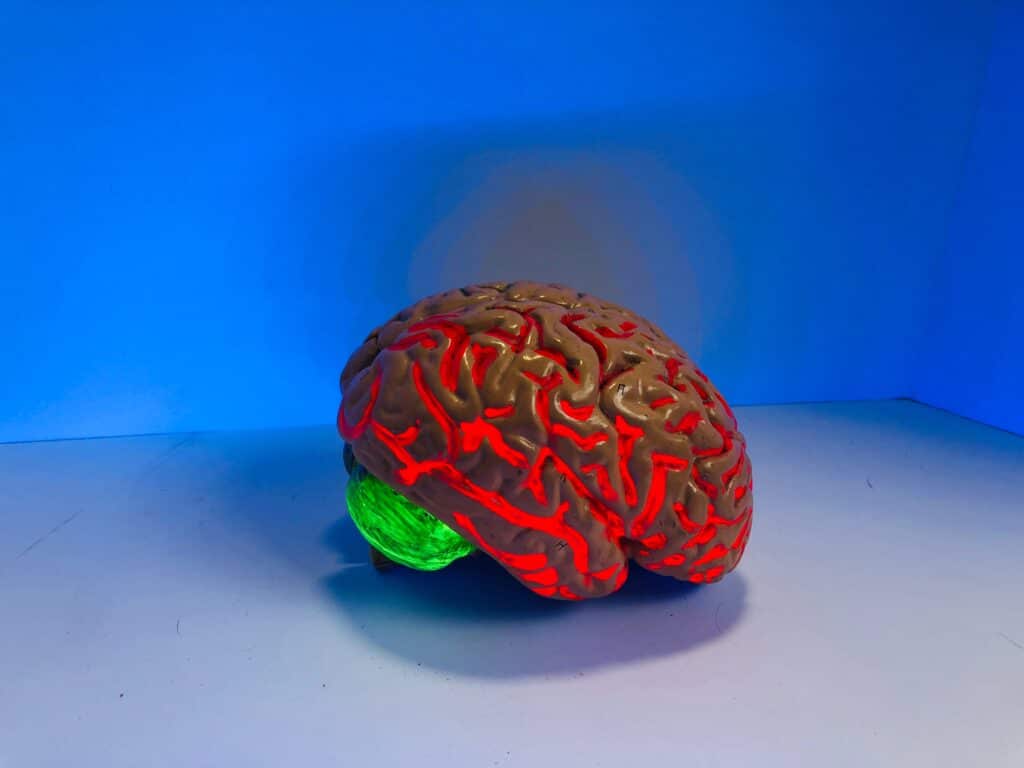
4. Has adverse effects on the brain: Several studies have been conducted to learn the relation between overeating and mental functions. These studies showed that an excess of emotional eating causes a mental decline in older adults. One study found that obesity negatively affects older adults' memory compared to their normal-weight counterparts.
Another study showed increased damage of white matter in obese adults. White matter is the nerve-fiber-rich matter found in the deeper tissues of the brain. The white matter is responsible for controlling emotions, appetite, and cognitive functions of the brain.
However, one shall not forget that fat is the main diet of the brain. Therefore, it is advisable to consume healthy fats such as avocado, buttery nuts, olive oils, and fatty fish while cutting back on unhealthy fats.
5. May lead to vomiting: The volume of an average stomach is about 2.5 ounces when it's empty. Upon eating, it expands to about 1 quart. Overeating or eating past your stomach's capacity will leave you feeling nauseous and will cause indigestion. In situations where you overeat too much, it can trigger gas, bloating, or even vomiting. Vomiting is essentially the body's way of reducing acute stomach pressure.
This condition is best avoided by eating in regulation at a slower paces.
6. Causes stomach problems: Stress eating all the time strains the digestive system, triggering gas and bloating. Carbonated soda and food with a lot of spices and high in fat tend to cause gas and resulting heartburn.
Furthermore, the way of eating also promotes gas. For example, eating large amounts of food rapidly will cause gas.
This could be prevented by cutting back on gassy food, eating slowly, and waiting until after meals to drink fluids.
7. Promotes lethargy: The blood sugars tend to drop right after a meal. This phenomenon is called reactive hypoglycemia. And the symptoms of low blood sugar levels are sleepiness, fatigue, rapid heart rate, and headaches. Therefore, emotional eating every now and then makes people sluggish or tired.
The reason behind this lethargy is thought to be related to excess insulin production upon eating.
Trending quotes on emotional eating
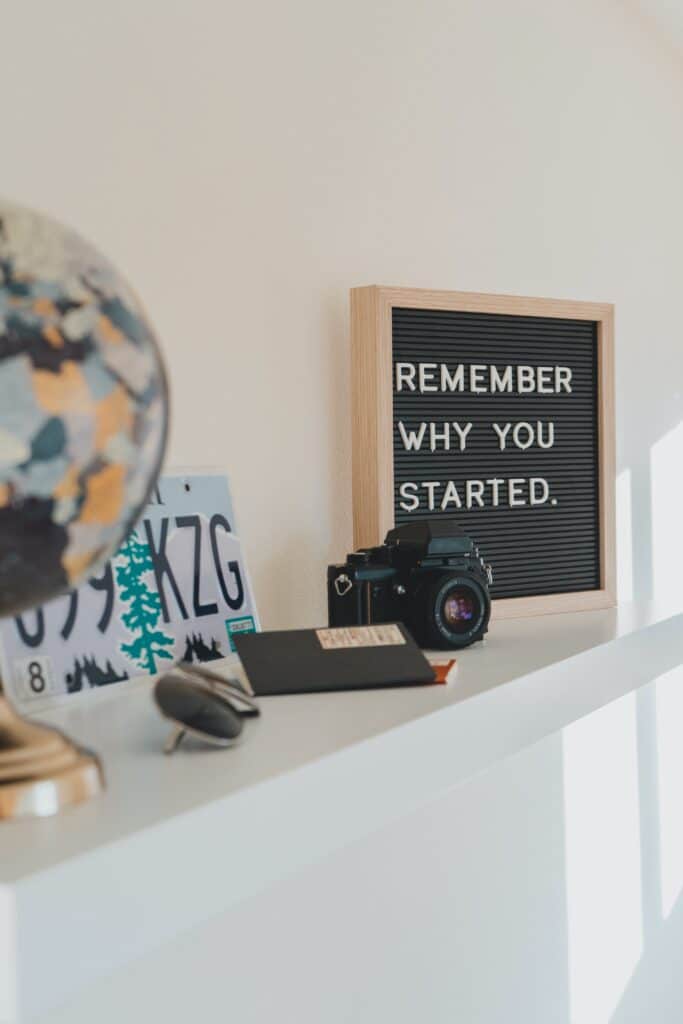
Karen Salmansohn is a very successful creative director/ ad writer who found herself trapped in the vicious cycle of emotional eating. She says she then made some life-changing mental shifts and overcame this battle with her willpower. She now runs a site called NotSalmon.com, where she openly discusses emotional eating, ways to beat it, and writes quotes on emotional eating to inspire willpower.
Here are a few of her quotes to inspire and encourage you to quit stress eating:
1. Food can distract you from your pain. But food cannot take away your pain. In fact, overeating the wrong foods can cause more pain.
2. Eating healthy food fills your body with energy and nutrients. Imagine your cells smiling back at you saying “Thank you”!
3. It is not that I “can’t” eat burgers, fries, candy- all that stuff. I am simply making the healthier choice not to. And it's not that I don’t want to. It’s just that something switched inside me, and now I prefer to eat food that doesn’t come with potential health issues.
4. Addictions occur when you seek to fill an emptiness inside you with something outside of you.
5. Don’t allow a problem you are having with a person to become an eating problem. Stop trying to stuff down your feelings with food.
6. Don’t allow a love problem to become an eating problem. Stop trying to stuff down your feelings with food.
7. Stop late-night eating. Not only to watch your weight but also to reduce the risk of acid reflux, sleep apnea, and even sinusitis.
8. Stop trying to fill the emptiness inside you with food.
9. Emotional eating doesn’t heal emotional issues. When you overeat, it's because you are avoiding a needed conversation with yourself. Swap pigging out for listening up.
10. If you binge when you are upset, you not only increase your weight, you increase your problems.
- You still have the problem that made you upset.
- You now have the problem of feeling physically uncomfortable.
- Plus, you have the problem of feeling bad about the binging.
11. I need to hire someone to just follow me around and knock unhealthy food right out of my hands.
12. Actually not eating candy and junk food is NOT about deprivation. It’s about self-love and self-care. It’s about knowing I’ll feel like garbage if I eat garbage. I’ve gotten to a point where I simply prefer to eat in a way that makes my body feel good- and keeps my mood and spirit feeling good too.

13. The keys to good health:
- buy food with mindful thought and not impulsively
- choose less food with wheat, sugar, sodium, crazy chemical additives, etc.
- cook food healthfully- for example using coconut oil instead of other oils.
- drink more water- especially helpful before meals
- eat slowly and stop before full
- work out a little daily- even going for a nice walk is helpful
- Get your vitamin Zzz’s. Sleep enough.
14. Most people have no idea how good their body is designed to feel.
15. Eat to fuel your body not to feed your emotions.
16. Warning: chocolate makes your clothes shrink.
17. Why can’t I be comforted by kale? Why does it have to be chocolate?
18. Oops. You caught me eating my feelings and they are delicious.
19. Apparently you have to eat healthy more than once to get in shape. This is cruel and unfair.
Top 3 books on emotional eating

A good collection of self-help books can assist in breaking the loop of almost any bad habit. Here are the three books you must read if you struggle with emotional eating:
1. Stop Eating Your Heart Out: The 21-Day Program to Free Yourself from Emotional Eating
Meryl Hershey Beck is a licensed professional clinical counselor and emotional eating recovery consultant. She is the inventor of SourceTapping, an energy psychology technique that helps her clients overcome cravings and emotional upsets. She is an author, teacher, international speaker, and presenter who has appeared on several radios and TV shows.
Her book Stop Eating Your Heart Out: The 21-Day Program to Free Yourself from Emotional Eating discusses that we tend to turn to food for comfort and rely on soul food to cope with everyday stress, anxiety, and everything in between. Opposite to popular belief, you don't have to eat your heart out. In her book, Meryl Hershey Beck sheds light on different eating disorders marked by cycles of compulsive eating. She preaches that rather than focusing on weight loss, one should recognize emotional eating and out-of-control comfort eating. She teaches readers to control cravings and live in recovery with humorous anecdotes, learned wisdom, and informational insights.
In this book, Meryl discloses her very personal struggle with food and overcoming binge eating. She uses the Twelve-Step Recovery approach while offering a number of practical self-help tools and assignments like:
- Inner Child work
- Creative visualizations and journaling
- Energy psychology techniques
Editorial Reviews
“Meryl Hershey Beck has presented 21 self-help tools in her thought-provoking, beautifully written Stop Eating Your Heart Out. She creatively and artfully takes us along on her journey as she combines tried and true recovery methods, such as the 12 Steps, with the new energy techniques. If you have a problem with overindulging and using food instead of dealing with feelings, then open this book and discover for yourself that you too can achieve freedom from emotional eating.” –Dr. James Durlacher, DC, author of Freedom from Fear Forever
“This is one of the best books on eating disorders that I have seen.” -Daniel J. Benor, MD, ABIHM, author of Seven Minutes to Natural Pain Release
2. Breaking Free from Emotional Eating
Geneen Roth is a writer and a teacher who has gained international fame through her work in eating disorders. She is the founder of the Breaking Free workshops, which she has been conducting nationwide since 1979. She also wrote Feeding the Hungry Heart, Breaking Free from Compulsive Eating, and When Food is Love.
In her book Breaking Free from Emotional Eating, Geneen showed how to achieve an end to the agony of emotional eating. Roth outlines her proven program for resolving the conflicts at the root of overeating through this book. She uses simple techniques developed in her highly successful seminars on how to console, as well as effective advice on:
· Learning to recognize the signals of physical hunger
· Eating without distraction
· Knowing when to stop
· Kicking the scale-watching habit
· Withstanding social and family pressures
This book comprises many more such strategies to help you break the binge-diet cycle forever.
Editorial Reviews
“A life-changing book.”—Oprah
“I SEE MIRACLES IN MY LIFE EVERY DAY, AND ROTH IS ONE OF THE PEOPLE WHO HELPED MAKE THAT HAPPEN.”—#1 New York Times bestselling author Anne Lamott in Mademoiselle
“She tells of her own experiences with a non-blink frankness cushioned by the gracefulness of her prose.”—Chicago Tribune
3. The Intuitive Eating Workbook: Ten Principles for Nourishing a Healthy Relationship with Food
The co-author of this book Evelyn Tribole, MS, RDN, is an award-winning registered dietitian with a nutrition counseling practice in Newport Beach, CA, specializing in eating disorders. She also teaches health professionals how to help their patients develop a healthy relationship with food, mind, and body through the process of Intuitive Eating, a concept she co-pioneered. Tribole is co-author of Intuitive Eating. She served three years on the Social Media Committee of the Academy for Eating Disorders. Tribole is often interviewed by the media for her nutritional expertise and has appeared in hundreds of interviews, including CNN, NBC's Today Show, MSNBC, Fox News, USA Today, The Wall Street Journal, and People magazine. She also gives presentations around the world on intuitive eating.
The other author of this book is Elyse Resch, MS, RDN, a nutrition therapist in private practice in Beverly Hills, CA, with over thirty-five years of experience, specializing in eating disorders, intuitive eating, and health of every size.
The Intuitive Eating Workbook offers a new way of looking at food and mealtime by showing you how to recognize your body's natural hunger signals. Focused on the ten principles of intuitive eating, the mindful approach in this workbook encourages the readers to abandon unhealthy weight control behaviors, develop positive body image, and most importantly, stop feeling distressed around food.
We are born with all the wisdom we need for eating intuitively. This book helps reconnect with that wisdom and ultimately brings a huge life change.
Editorial Reviews
“This is not just another book about dieting, but rather a simple ten-step approach to improve the relationship between food and one’s mind, body, and soul! The book promotes the principles that will maximize psychological and physical health to improve quantity and quality of life—something that I have promoted and written about for the past thirty-five years. This work should prove to be extremely helpful to many patients, including my own, and to the general public. I highly recommend it!”
—Carl “Chip” Lavie, MD, FACC, FESPM, medical director of cardiac rehabilitation and prevention, and director of exercise laboratories at John Ochsner Heart and Vascular Institute, and professor of medicine at Ochsner Clinical School, UQ School of Medicine
“The Intuitive Eating Workbook, written by Health at Every Size advocates Evelyn Tribole and Elyse Resch, is an invaluable tool on your journey to developing a peaceful and satisfying relationship with food, mind, and body. It explains the principles of intuitive eating in a clear and inviting way and offers a wealth of thought-provoking and effective exercises that help readers tune into their bodies’ signals, and challenge distorted thoughts about food and body. This book will be a treasured resource for the general public and for health professionals as well.”
—Linda Bacon, Ph.D., author of Body Respect and Health at Every Size
How do I use Healthi formerly iTrackBites to beat emotional eating?
Abusing fatty and sugary food out of emotions made me put on a lot of extra weight. I started getting worried about diabetes and other health issues related to obesity. I wanted to lose weight, but my cravings made it harder to do so. That's when I came across the Conquer Cravings plan of Healthi formerly iTrackBites. As mentioned on its website, Healthi formerly iTrackBites is a “personalized and affordable weight loss app.”
You can learn more about it here https://smileyspoints.com/how-does-itrackbites-work/
The conquer cravings plan of Healthi formerly iTrackBites is specially made for people who:
- Have a craving for sweets after dinner
- Finish a bag of salty snacks in one sitting
- Favor a specific type of food
- Don't feel satiated even after a meal
The Bite System
Healthi formerly iTrackBites uses a BITE system to help shed weight. A BITE is calculated from a proprietary equation that distills every food and drinks item into a numeric value. This is different from strict calorie counting because it rewards factors that are relevant to your diet plan. After all, not all calories are created equal.
On the Conquer Cravings Plan:
- Calories form the baseline
- Fat intake drive BITES up
- Fiber intake drives BITES down
If a food has a high BITE value, it is advisable to stay away from that type of food. If a food has a low BITE value, it is a good choice for your diet plan. Throughout Healthi formerly iTrackBites, you will see BITE values identified in a Hexagon. On the Conquer Cravings plan, calories from the baseline will help you manage your portions. Fat and fiber are accounted for since they play a role in food cravings and portion control. This calculation is based on the latest nutrition science to gently push you into a habit of managing your food cravings while still giving you the flexibility to enjoy the foods you love.
On Healthi formerly iTrackBites, you'll get three types of BITE allowances:
- The Daily BITE allowance is the number of BITES one can eat on a particular day. This number is personalized for each person based on their age, gender, height, weight, and activity level.
- The Weekly BITE allowance is an extra allowance of BITES that one can divide up how they would like (split them up evenly, save them for the weekend, or don't use them at all). This is the opportunity to cater the Conquer Cravings diet to the lifestyle.
- Activity BITES are similar to Weekly BITES and are awarded when one does the exercise. There's a balance between what one consumes and expends. Therefore, when one exercises, Healthi formerly iTrackBites rewards them with BITES because their body expends more calories.
What Are Zero BITES Food?
Last but definitely not least is the Zero-BITE foods. These foods were selected since they built the foundation for the Conquer Cravings plan. The majority of these foods are high in fiber and tend to be very low calorie. The best part? When you track these foods, they don't count toward your BITE allowance! One can use these foods strategically to fill up the majority of their plate.
Here is a list of 0 BITES foods recommended by Healthi formerly iTrackBites:
- Alfalfa Sprouts
- Artichokes
- Arugula
- Asparagus
- Bamboo Shoots
- Bean Sprouts
- Beets
- Beet Greens
- Bok Choy
- Broccoli
- Broccoli rabe
- Broth and Bouillon, any Brussel Sprouts
- Cabbage, all varieties
- Carrot, RAW only
- Cauliflower
- Celeriac
- Celery
- Chard, Swiss, or Rainbow
- Chayote Squash
- Chicory
- Coleslaw Mix (cabbage and Carrot only – no dressing)
- Collard Greens
- Cucumbers
- Dandelion Greens
- Daikon
- Egg Whites (up to 2 only)
- Eggplant
- Endive
- Escarole
- Fennel
- Garlic
- Ginger
- Green Beans
- Heart of Palm
- Jerusalem Artichokes (Sunchoke)
- Jicama
- Kale, all varieties
- Kohlrabi
- Leeks
- Lemons
- Lettuce, all varieties
- Limes
- Microgreens
- Mixed Salad Greens
- Mung Bean Sprouts
- Mushrooms
- Mustard Greens
- Nopales (cactus)
- Okra
- Onion, all varieties, RAW only
- Peppers, all varieties
- Pickles, unsweetened
- Pumpkin
- Radicchio
- Radish
- Ramps
- Rhubarb
- Sauerkraut
- Scallions
- Seaweed, Nori
- Shallots
- Snow Peas (1⁄2 cup)
- Spaghetti Squash
- Spinach, all varieties
- Squash Blossoms
- Sugar Snap Peas (1⁄2 cup)
- Tomatillos
- Tomatoes, all varieties
- Turnips
- Turnip Greens
- Water Chestnuts (1⁄2 cup, Canned, sliced)
- Watercress
- Yellow Crookneck Squash
- Zucchini
- Diet Soda
- Tea
- Coffee
- Club Soda / Seltzer
- Tomato Juice (1⁄2 cup)
- V8 Juice (1⁄2 cup)
- BBQ Sauce (1tbsp)
- Chili Sauce (1tbsp)
- Horseradish Sauce (1tbsp)
- Hot Sauce (1tbsp)
- Ketchup (1tbsp)
- Mustard (1tbsp)
- Soy Sauce (1tbsp)
- Steak Sauce (1tbsp)
- Teriyaki Sauce (1tbsp)
- Vinegar, all varieties (1tbsp)
- Worcestershire Sauce (1tbsp)
- Creamer, fat free (1tbsp)
- Half n' Half, fat free (1tbsp)
- Margarine, fat free (1tbsp)
- Whipped Topping, fat free (2tbsp)
- Salsa, fat free (2tbsp)
- Tomato Sauce, canned, no oils (1⁄2 cup)
- Tomato puree (1⁄4 cup)
- Tomato paste (2tbsp)
- Gelatin, sugar free (1 snack cup or up to 2 servings = 1⁄2 box prepared)
Although there isn't a magic solution that will cure food cravings or help control portions, there is reason to speculate that fat and fiber play a role in these phenomenons.
Why Fiber?
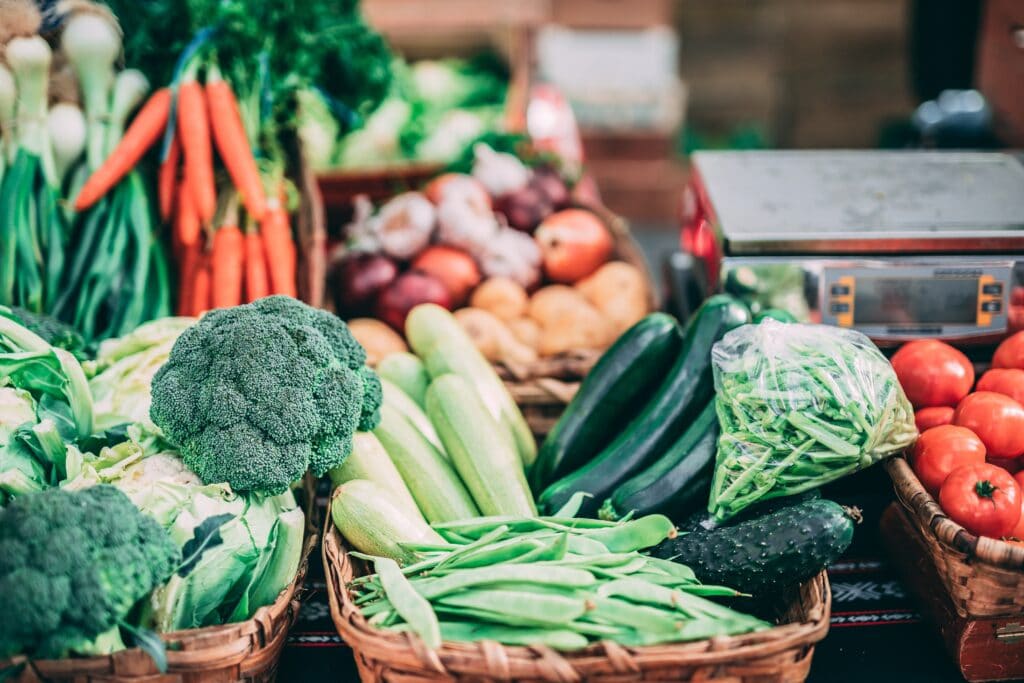
Fiber is like the knight in shining armor. It can be defined as a plant constituent that the stomach cannot degrade. It's commonly known to help with digestion; however, it also offers additional benefits that help us avoid those pesky cravings. Intake of fiber promotes the feeling of satiation. Fiber also has a low energy density (less than two calories per gram instead of the nine calories per gram in fat). That means you could consume much more fiber for the same amount of calories as fat. In addition, fiber is thought to induce the production of satiety signaling gut hormone glucagon-like peptide-1. A study conducted by Rebello and other researchers from Louisiana State University compared the satiety impact of oatmeal versus a low fiber breakfast cereal and found that oatmeal had a significantly greater increase in fullness and hunger reduction in comparison to the low fiber cereal.
Why Fat?
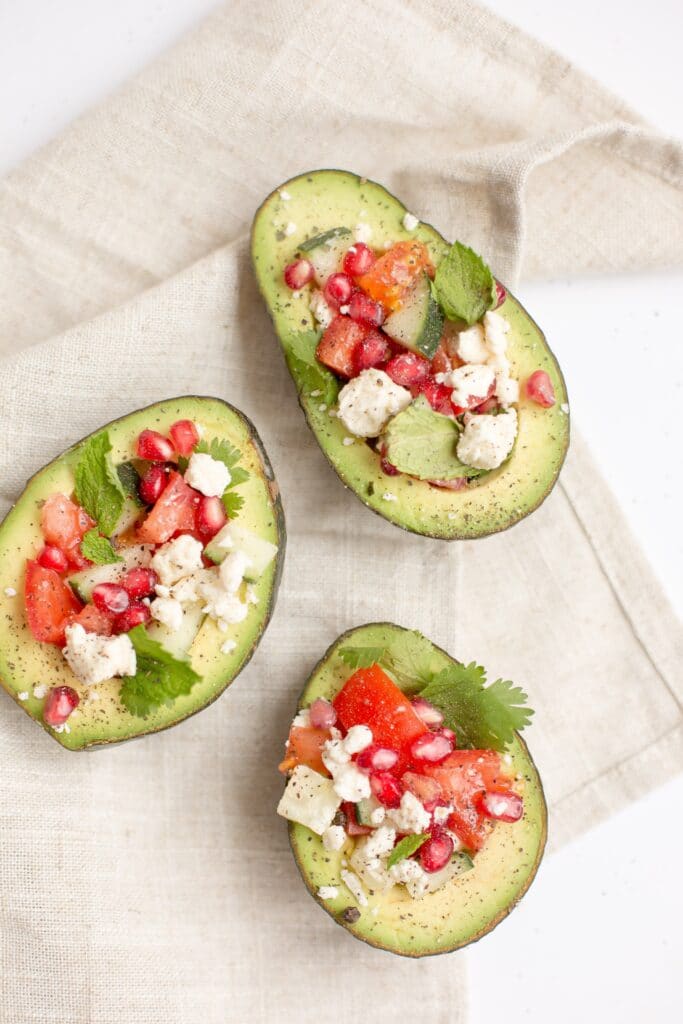
Fat has the highest energy density out of all the macronutrients, making it easy to passively intake a large number of calories. Think about a modest handful of potato chips. Did you know that it has roughly 19 grams of fat? That translates to about 180 calories, and that's only in a modest serving! Fat is also highly hedonistic (our taste buds think fat is very tasty), making it the reason we tend to overindulge in fatty foods over much healthier options. In a study conducted by Johnson and Kenny, it was found that fat may have the ability to rewire one's neurocircuitry, resulting in a hyposensitivity to rewards which ultimately may facilitate compulsive eating. More specifically, fats may rewire our brain circuitry in a way that promotes overindulgent behavior. The researchers hypothesize that this response may be due to deficits in a dopamine signaling pathway, the same one that is triggered by the consumption of abusive drugs!
It's important to consider both fat and fiber when considering a diet that focuses on reducing cravings. Yes, one can lose weight on a diet that is low-fat, and you can lose weight on a diet that is high in fiber, but in order to get the most bang for your buck, it is best to pay attention to both components. In fact, researchers at Tufts University found that mean weight loss was more than three times as great in subjects consuming a lower fat, higher fiber diet than in subjects consuming diets low in fat only. Thus, fat and fiber seem to have additive effects when it comes to weight loss. This is the reason why Conquer Cravings takes both of these components into account in its BITES equation.
Food Recommendations
To get the most out of the Conquer Cravings diet plan, it is best to choose foods low in fat and high in fiber.
Following are the key food guidelines that were recommended to me when I started the plan:
- Choose unprocessed over packaged foods.
- Non Processed foods are generally more likely to contain fiber. Go with unrefined grains. The darker the grain, the more vitamins and minerals it has (which includes fiber!).
- Know your limits. Choose already portioned dessert and/or higher fat items to avoid overeating.
Healthi formerly iTrackBites gave me a daily meal plan that made me feel satiated while keeping me on my daily calorie allowance. Here I am sharing the sample meal plan for my one day:
Breakfast: Egg White Omelet
- 3 egg whites 1 tbsp.
- butter 1/4 cup
- bell peppers
The best way to start your day is with low fat, low BITE, high protein breakfast. I preferred to add a low BITE fruit or a small bowl of oatmeal for an extra boost of fiber.
Lunch: Black Bean Salad
- 1 cup barley
- 1/2 cup black beans
- 1 cup cherry tomatoes
- 1/4 lb shrimp (opt.)
- 1 tbsp. olive oil
- 1 garlic clove
- 2 scallions
- dash of lemon juice
This flavorful salad was like a reward to my taste buds for sticking to the diet chart. The barley itself is packed with 4 grams of fiber. You can add spices to the salad if you want to.
Dinner: Maple Glazed Salmon
- 4 oz. salmon
- 1/2 tbsp chili powder
- 1 tbsp. maple syrup
- 1/2 tbsp. paprika
- 1/4 tsp. sea-salt
- 1 tsp. coconut sugar
Who says you can't have any fats? This meal offers 14 grams of healthy, omega-3 fatty acids! Complete this plate with fibrous, Zero-BITE vegetables like broccoli or asparagus.
Apart from the daily meal plan, Healthi formerly iTrackBites also had a reservoir of tasty yet healthy snacks to munch on.
1. Roasted ChickPeas
- 1/2 cup chickpeas
- 1 tbs. paprika
- 1 tsp. onion powder
- 1 tsp. pepper
Banish those chip cravings with a healthier alternative! This low-calorie, crunchy snack packs 7 grams of fiber and is perfect for those who regularly crave those salty snacks. Just toss together the ingredients, spread on parchment paper, and bake for 1 hour, occasionally stirring until crispy.
2. Seasoned Tomato Slices
- 3 heirloom
- 1 tbsp. pepper
- 1 tsp. salt
This low-calorie, rich-in-fiber snack is perfect to munch on if you want to eat something in between the meals.
3. Sea Salt Popcorn
- 1 cup air-popped, lightly seasoned popcorn
Enjoy these either during a movie or on your way to a meeting.
4. Chocolate Avocado Pudding
- 1 cup avocado
- 1/4 cup cocoa powder
- 1/4 cup maple syrup
Savor into this recipe to satisfy your sweet tooth while adding some fiber to your system.
How To Be Successful?
Losing weight is already hard; food cravings make it even harder. Starting and adapting to a new diet was very challenging for me. Therefore, I adhered to this step-by-step guide that eased my way into this new eating style. You, too, should follow this guide if you are willing to lose weight effectively without putting your health at risk.
1. Take it easy!
New diets take a while to get used to, and you may not be successful from the get-go. If you go over your BITE allowance the first day, do not be discouraged. Your body will need time to adjust. It may take some experimenting, but eventually, you will find what works best for you!
2. Plan your meals strategically
Zero BITE foods should be prioritized in your meals in order to add bulk to your plate without draining your BITES. Use non-Zero BITE foods strategically to fill in the rest of your plate. A good rule of thumb is to have 1/2 of your plate as non-starchy vegetables, 1/4 of your plate as whole grains, and the other 1/4 as a lean protein source.
3. Use your weekly allowance
Members lose weight most effectively on this plan when they utilize at least 75-100% of the Weeklies each week (with some using them all). In this plan, Weeklies are not extras; they can and should be used. They are simply set aside as Weeklies to divide as you need. (PRO users can turn on secondary calorie tracking to help make sure you are hitting your daily calorie targets.)
4. Stay Hydrated
There are many benefits to drinking water. Of course, you want to stay hydrated, but especially on the Conquer Cravings plan. Fiber works best in the body when accompanied by an ample supply of water. Aim for at least 8-10 cups a day, but this number may increase depending on the heat, exercise, and medications. Check with your doctor if you aren't sure.
Memes to Share
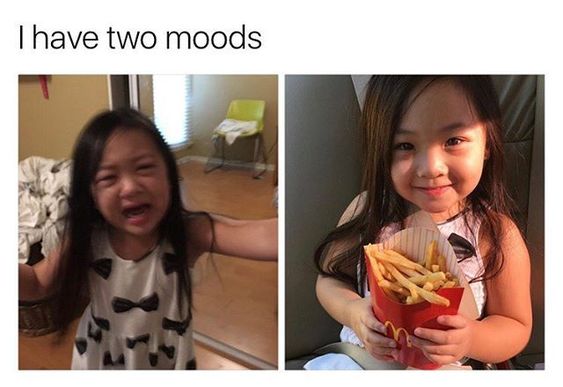
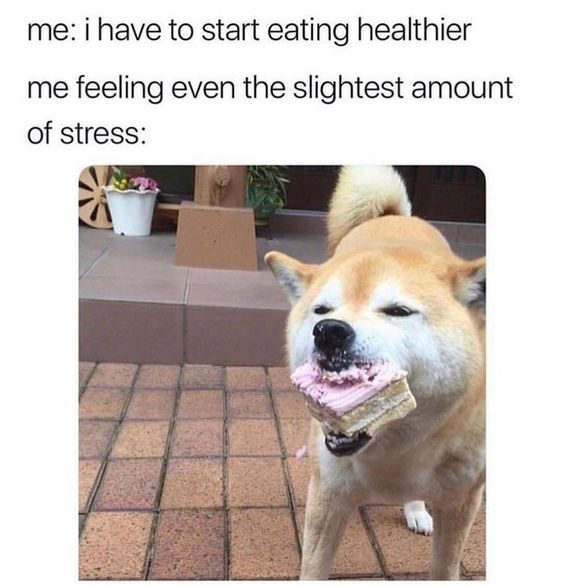

Alternatives To Emotional Eating
Fake it till you make it. Unless you completely overcome emotional eating, try to distract yourself with healthier alternatives. Here are a few proven alternatives to emotional eating. Choose the ones that deem the most suitable to you.
1. Use some distraction: Channelling your emotions through hobbies and talents is the best way of distraction. Instead of focusing on food, try doing other activities that make you happy, like painting, dancing, or photographing. You can also try playing some of your favorite board games. When you feel stressed and want to binge eat, engage yourself in a fun, relaxing activity to help you take your mind off the negative emotions and eating. Even the simplest of the activities like listening to your favorite song, watching a fun movie, or talking to a friend can also help distract your mind and keep you from eating mindlessly again.
2. Drink water: Whenever you feel like devouring a snack between meals, drink water. Water makes the stomach feel full while hydrating the body. Also, drinking more water will leave you with healthy-looking, glowing skin and help you shed that extra pound. Squeeze a lemon in the glass of water, and you get yourself a refreshing, tasty drink that not only keeps you healthy but also helps you fight the craving of snacking in between meals.
3. Beat the bad mood with exercise: As established earlier, stress or the bad mood triggers emotional eating. Exercising releases the endorphins or “feel good” hormones which boost the mood, eliminating the need for emotional eating. It is preferable to schedule the regular time slot for a little workout. It will help to beat the bouts of emotional eating.
If you decide to work out alone, it will give you the time and space to think about your emotional issues. Don't want to go it alone? Try exercising with your family or friends. They are great to help push you along and keep you motivated when times get tough.
4. Swap the unhealthy with healthy: If you feel like grabbing a snack every now and then, try turning to a healthy alternative that will satisfy your craving while nourishing your body. There are so many nutritious variants of your favorite snacks that taste just as good. Here are some common snacks people like to indulge in, paired with their healthier alternatives;
| Snack | Healthier Alternative |
|---|---|
| Cake | Bake a healthier version of cake using lots of fruits and dry fruits |
| Brownies | Adding avocado to your favorite chocolate brownie recipe will enhance the flavor of the chocolate while offering heart-healthy fats. |
| Cookies | Bake oil-free cookies using high fiber oats and low carb almond flour. |
| Ice cream | Swap the regular ice cream with coconut milk or cashew based ice cream. Vegan ice cream is also a healthier version. |
| Chocolate | Eat dark chocolate rather than milk chocolate, it is higher in heart healthier flavonoids. |
| Soda | Swap the sugary soda with sparkling water or Kombucha. |
| Sliced white bread | Lower-carb cauliflower bread tastes almost as good as white bread while offering a full serving of vegetables. |
| Pizza | Bake your own pizza with zucchini, mushroom or cauliflower crust (all low carb and rich in fiber). And load it with veggies. |
| Pasta | Make your own pasta at home with spaghetti squash, zucchini, whole wheat, sweet potato, beets, or other vegetables tossed with black bean, lentil or chickpea. |
| Rice | Swap the regular white rice with cauliflower rice. |
| Chips | Kale chips, spicy sweet potato fries, or zucchini fries are nutrient-dense, tasteful substitutes for regular potato chips. |
| Cheese | Use lower-fat nutritional yeast or dairy-free cheese. |
| Microwave popcorn | Turn to low fat air-popped popcorn. |
| Cheese puffs | Munch on lower-fat, higher-fiber, and higher-protein chickpea puffs instead. |
| Instant noodles | Make your own lower-carb zucchini noodles in higher-protein bone broth. |
| Fruit-flavoured snacks | Eat fresh fruit salad instead. |
| Sorbet | Dice your favorite fruit and freeze it. Eat it as it is or blend it in sorbet. |
| Store bought juice (packed with preservatives) | Blend one part freshly squeezed orange, apple or cranberry juice with two parts seltzer for one-third the sugar of whole fruit juice. |
| Cream based soup | Swap it with a Splendid Spoon and Daily Harvest. |
| Whipped cream | Use dairy free coconut whip. |
| Store bought peanut butter (made with sugar and palm oil) | Make your own natural peanut butter with no added oil or sugar. |
5. Stock the kitchen with healthy food: If you are a compulsive snacker, keep your kitchen stocked with healthy food or snacks to grab whenever you feel like munching. Make sure to throw out all the fatty and sugary products like doughnuts, chocolates and potato chips.
6. Relaxation Techniques: If you are a stress eater, target your problem rather than targeting the symptom, as in rather than trying hard to cut back on snacking, try some relaxation techniques that will help you overcome stress and hence, stress eating. There are several relaxation techniques currently in use that help decrease stress levels, elevating one's mood. One can practice yoga, do meditation or simply take a hot shower to feel relaxed. Here is a step by step guide for meditation to relieve you from tension and anxiety:
- Sit comfortably: Find a quiet and calm place for meditating. You can sit on a chair with your legs touching the ground, or you can choose to sit loosely with legs crossed, whatever deems comfortable to you.
- Set the timer: Set a time limit for the practice and set your timer accordingly as it is challenging to keep track of time during the session. Beginners can start with a short time, such as 10 minutes, and increase the limit progressively.
- Focus on your breath: Pay close attention to the sensation of your breath as it goes in and as it goes out. Notice your chest expanding and contracting with your breath.
- Notice your wandering mind: it is natural and, to some extent, inevitable for beginners to lose their focus and ponder over their thoughts. When you notice your mind wandering, simply refocus it on your breath. Be kind to your mind, don't try to force it to concentrate; it will only make the practice difficult. Instead, let these thoughts play like a movie and don't indulge with them.
- mindset: this isn't a diet, don't let yourself feel deprived. Eat your points or Bites!
- tracking: I track everything, even zero point foods
- portion control: this is on my fridge to keep me mindful
- persistence: I wrote this poem about never giving up
- planning: I use meal plans and freezer cooking often
- support: I'm in my low point recipe Facebook group daily
Takeaway
Emotional eating is more common than one would think. And it is never easy to fight emotions and cravings at the same time. The first step towards taking control of your life is to acknowledge that you are going through a phase of emotional eating. The rest are baby steps that should be taken once at a time and if you stick by them, you can get rid of this toxic habit and can shed the extra pound it made you put on.

